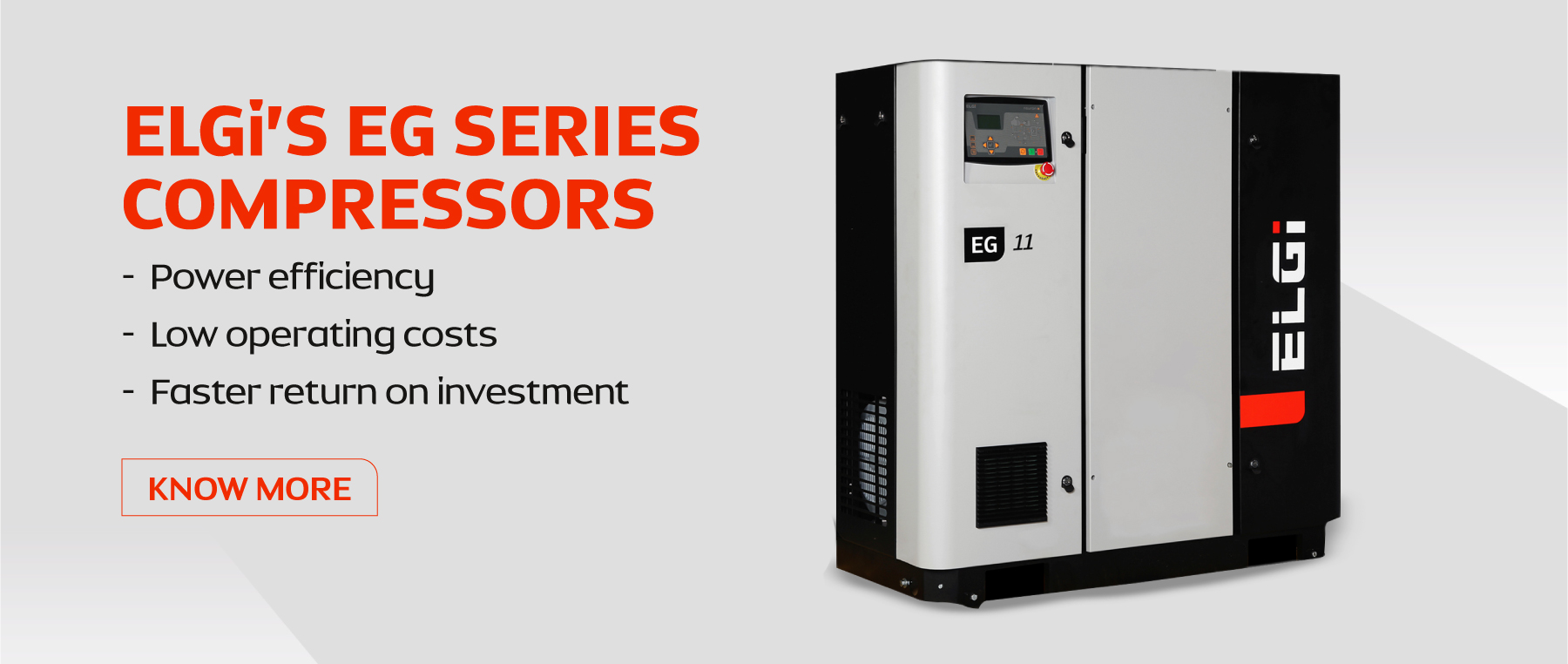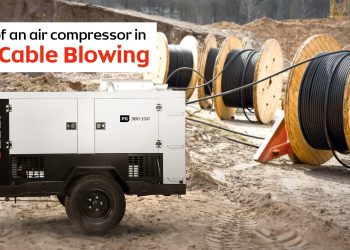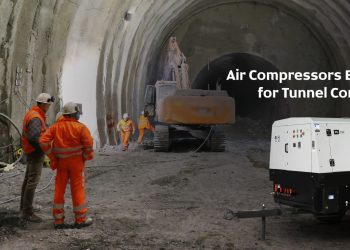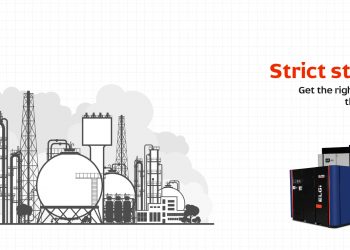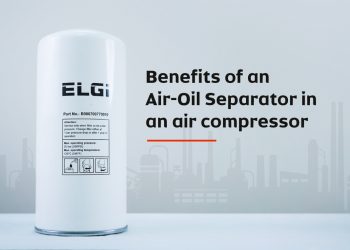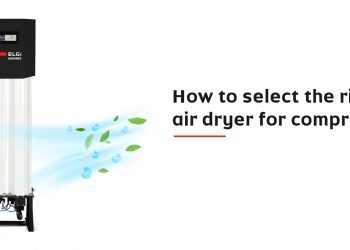Elevating to newer heights with compressed air!
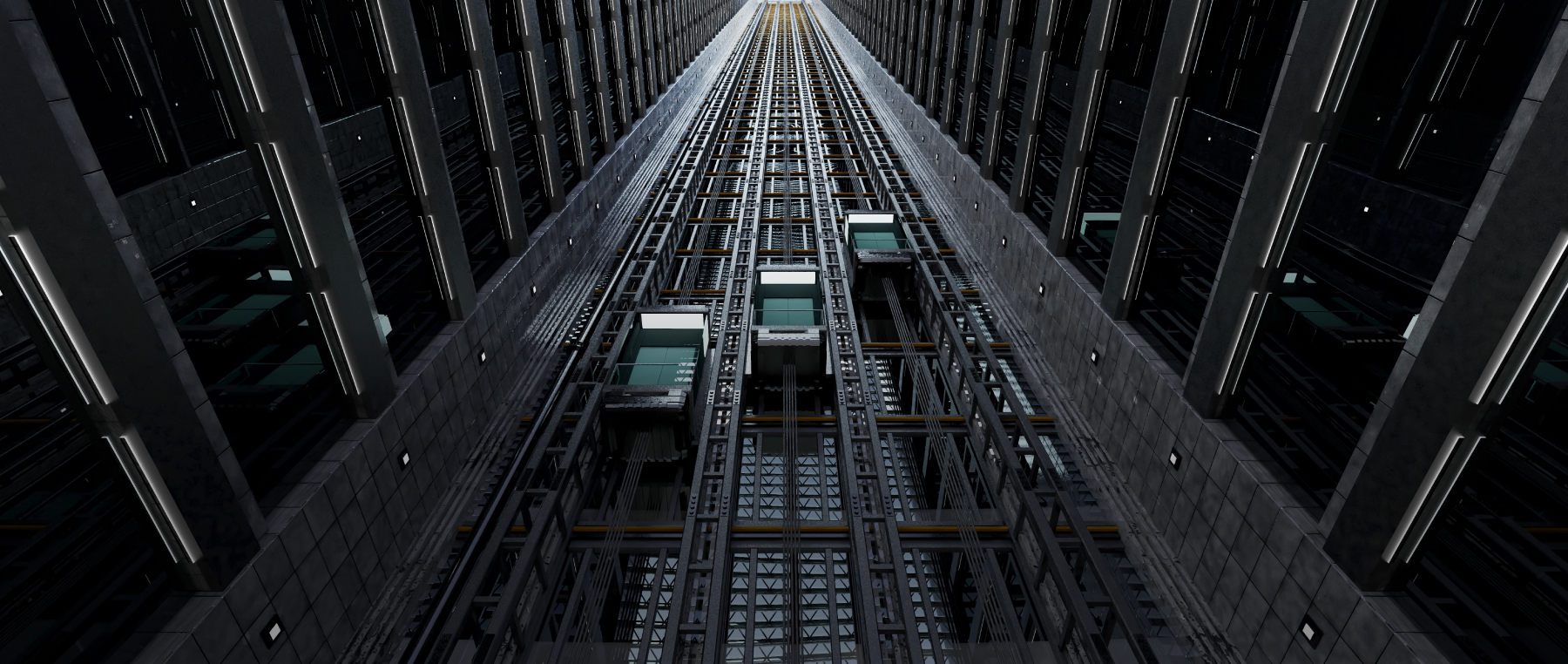
Without elevators, multi-story offices and apartments would be a myth. We may not notice everyday, but elevators are undoubtedly a part and parcel of modern-day living, without which, a lot of processes would come to a startling halt.
Today, let’s read about a global leading elevator manufacturer, which chose ELGi’s EG Series screw air compressors for their newest plant in Pune to achieve their ambitious production targets for market expansion in India.
Elevators – then and now
While most of us believe that elevators are a relatively recent invention, they have been around for hundreds of years!
Undoubtedly, the elevators and escalators of today are a far cry from the ones produced in the earlier centuries.
The first known elevators were installed in the mid-19th century to move bulk materials in coal mines and lumber mills in hilly areas. In 1835, these steam-powered, crude versions were replaced by belt-driven elevators that used counterweight as the basic principle to provide extra force. These were followed by hydraulic cranes and then electric powered elevators in 1880.
Elevators entered the commercial space in 1857 when the first passenger elevator was installed in Broadway, New York City. With each invention and development, there were improvements in efficiency, speed, and safety of these devices.
This constant evolution has now led to what we know today as high-speed, zero-noise, automatic, sensor-controlled lifting and moving systems that make it easier for us to travel upward or forward.
Inside a manufacturing plant
The primary raw material used for elevator manufacturing is steel that gives it the durability and strength that it requires. Steel comes in the form of large sheets from which elevator cars or cabinets are built.
- Building cabinets – Shearing machines cut large steel sheets in varying sizes to fit the different sizes of elevator cabinets.
- Incorporating the design – The sheets are then put through punching machines that pierce the sheets to punch them according to the cabinet’s design.
- Building machines – In this process, the sheets are given shapes to form doors, elevator covers, and floors.
- Joining and holding – The different parts of the cabinet are welded together, thus giving it the shape of an elevator. Decorative panels, floor tiles, handrails, lighting, cabling, control panels, and emergency call buttons are attached to the cabinet at this stage.
- Powder coating – Powder coating is applied to the raw cabinets to prevent corroding. Stainless steel cabinets do not undergo this process.
- Packing and assembly – The final product is then packed and stored to be moved out of the facility. The product is assembled at the site of installation and tested on various operations and safety parameters before it is ready for use.
The role of dry air
The manufacturing of elevators requires dry compressed air at various stages. Compressors are critical during the building of cabinets, punching, and powder-coating operations.
According to a senior maintenance manager of the elevator company, to produce high-quality elevators moisture-free air across all these processes is needed, without which the quality of the final product will be poor. Furthermore, it is imperative to have air at constant pressure, without which each process will take more time.
This is why, the company chose ELGi’s EG 90P and EG30 compressors for their plant. With this installation, they expect to see cost benefits in terms of power savings.
Fitted with variable frequency drives to meet varying power requirements at different stages of a manufacturing process, ELGi EG Series screw compressors offer higher power efficiency, reduced operating costs, and faster return on investment. By powering the processes, these compressors will play a key role in boosting the company’s business goals to enhance their market share.
To read more about the EG Series range, visit here

